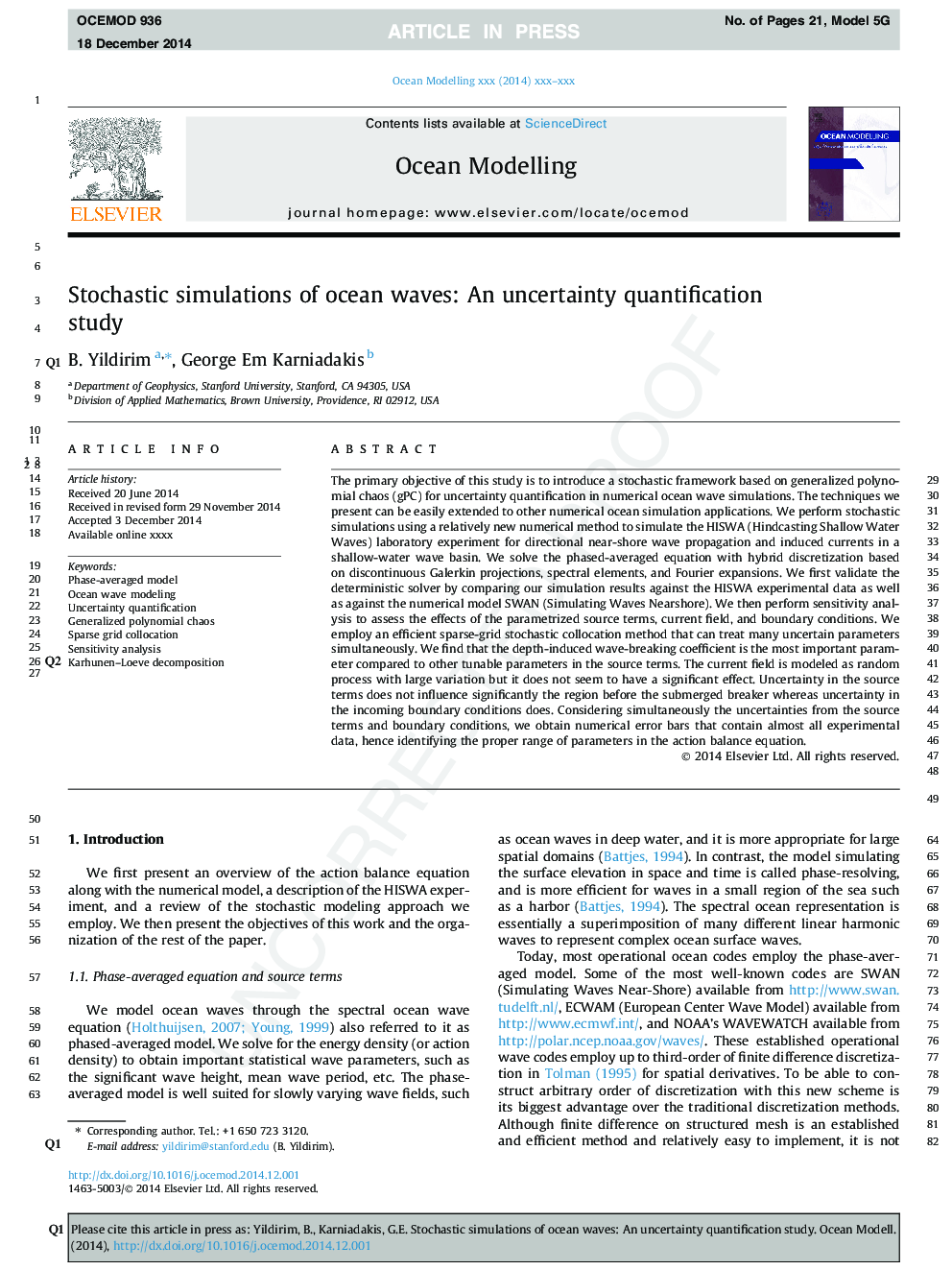| Article ID | Journal | Published Year | Pages | File Type |
|---|---|---|---|---|
| 6388155 | Ocean Modelling | 2015 | 21 Pages |
Abstract
The primary objective of this study is to introduce a stochastic framework based on generalized polynomial chaos (gPC) for uncertainty quantification in numerical ocean wave simulations. The techniques we present can be easily extended to other numerical ocean simulation applications. We perform stochastic simulations using a relatively new numerical method to simulate the HISWA (Hindcasting Shallow Water Waves) laboratory experiment for directional near-shore wave propagation and induced currents in a shallow-water wave basin. We solve the phased-averaged equation with hybrid discretization based on discontinuous Galerkin projections, spectral elements, and Fourier expansions. We first validate the deterministic solver by comparing our simulation results against the HISWA experimental data as well as against the numerical model SWAN (Simulating Waves Nearshore). We then perform sensitivity analysis to assess the effects of the parametrized source terms, current field, and boundary conditions. We employ an efficient sparse-grid stochastic collocation method that can treat many uncertain parameters simultaneously. We find that the depth-induced wave-breaking coefficient is the most important parameter compared to other tunable parameters in the source terms. The current field is modeled as random process with large variation but it does not seem to have a significant effect. Uncertainty in the source terms does not influence significantly the region before the submerged breaker whereas uncertainty in the incoming boundary conditions does. Considering simultaneously the uncertainties from the source terms and boundary conditions, we obtain numerical error bars that contain almost all experimental data, hence identifying the proper range of parameters in the action balance equation.
Keywords
Related Topics
Physical Sciences and Engineering
Earth and Planetary Sciences
Atmospheric Science
Authors
B. Yildirim, George Em Karniadakis,
